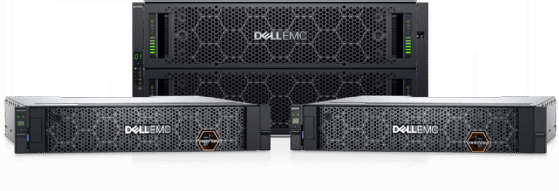
Getty Images
Performance, capacity tick up with Dell PowerVault ME5
Dell Technologies modernized its entry-level storage with the new Dell PowerVault ME5, bringing more performance, capacity and ease of use for its SMB customers.
Dell Technologies released a new version of its entry-level storage array Wednesday with twice the performance and four times the capacity of its predecessor.
Aimed at SMBs, the Dell PowerVault ME5 is optimized for storage area network or direct-attached storage systems. While technically a refresh, the ME5 contains all new hardware. This will make for a significant transition for companies of the ME4, which has sold nearly 55,000 systems since its release in 2018.
Eric Burgener, an analyst at IDC, said Dell's focus on the SMB market is a tactical play, as entry-level storage products are the first a growing company buys.
"There is an advantage to incumbency when a growing company needs to add more storage or buy a bigger storage array," Burgener said.
The entry-level storage market, itself, is also growing. IDC predicts it will hit $6.9 billion in 2025, a five-year compound annual growth rate of 3.9% per year, Burgener said.
Fitting the entry-level need
The new ME5 is tightly integrated with the Dell EMC PowerEdge server portfolio, according to Ben Jastrab, director of storage product marketing at Dell, giving the primary storage array the ability to utilize the vendor's server products. The ME5 can integrate the previous and current generations of PowerEdge, 14G and 15G, and will be 16G-ready.
IDC's Burgener noted that storage performance and capacity increase in lockstep with customer workloads. Even with entry-level storage products, customers need high availability for their applications as well as an ability to add more workloads to a system while staying within budget.
"The SMB customers that Dell primarily sells PowerVault to really focus on cost," he said. "They often redeploy their older systems to less performance-sensitive workloads, moving their more performance and availability sensitive workloads to the newer systems."

What is new and different
The ME5 is outfitted with Intel CPUs that have twice the cores as previous models. Dell has added 25 Gb iSCSI and 32 Gb Fibre Channel protocols for faster network speeds.
For performance, Dell is claiming up to 640K IOPS, which is twice the IOPS of the ME4.
"Small to medium businesses don't always necessarily have small to medium workloads," said Joe Catalanotti, primary storage product marketing manager at Dell.
The refresh represents twice the performance and much higher capacity, Catalanotti said.
"Workloads are growing and SMBs are experiencing a growth rate where they need outcomes faster," he said. "They need to be able to connect to different types of applications and hosts with different types of protocols at higher-speed protocols."
The PowerVault will ship with up to 6 petabytes for high-end capacity; however, the firmware is designed to support up to 8 PB. Once higher drives are available, customers will be able to increase capacity.
On storage, the PowerVault can be configured as all-flash, hybrid or all spinning disks depending on the customers' needs.
The Dell PowerVault ME5 comes in three models: 5012, 5024 and 5084 representing 12 drives, 24 drives and 84 drives in either 2U or 5U form factors.
Two modes and tweaked software
Like ME4, the PowerVault ME5 can run in two operational modes, linear and virtual, Catalanotti said. Linear enables logical requests from the host to go straight to the storage, making it more efficient and faster. Most customers will choose virtual mode, which provides access to all the data services for storage PowerVault offers including management and data protection.
Burgener said the selected operational mode will depend on the customer. Linear mode enables users to maximize IOPS but minimizes access to features such as thin provisioning, snapshots, auto tiering, replication or volume copy. Virtual mode provides access to the data features, but the cost is lower performance, which varies based on how customers are using the array.
On the software, Dell made the PowerVault GUI more user-friendly for the ME5. Its asynchronous replication feature was also upgraded with bidirectional capabilities and can replicate between ME4 and ME5 systems.
"Moving from ME4 to ME5 is a forklift upgrade," Burgener said. "And the new bidirectional replication capabilities give customers a nice way to migrate data from older to newer systems."
The Dell PowerVault ME5 is available now and starts at $12,000 USD.








